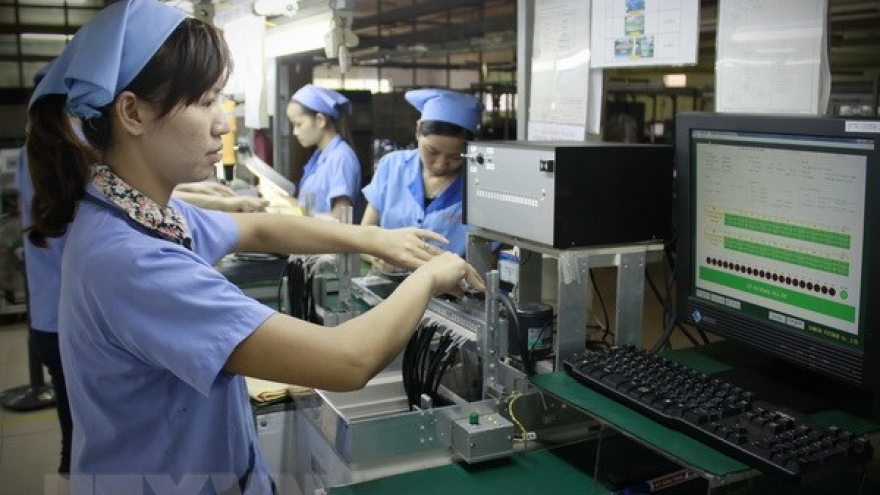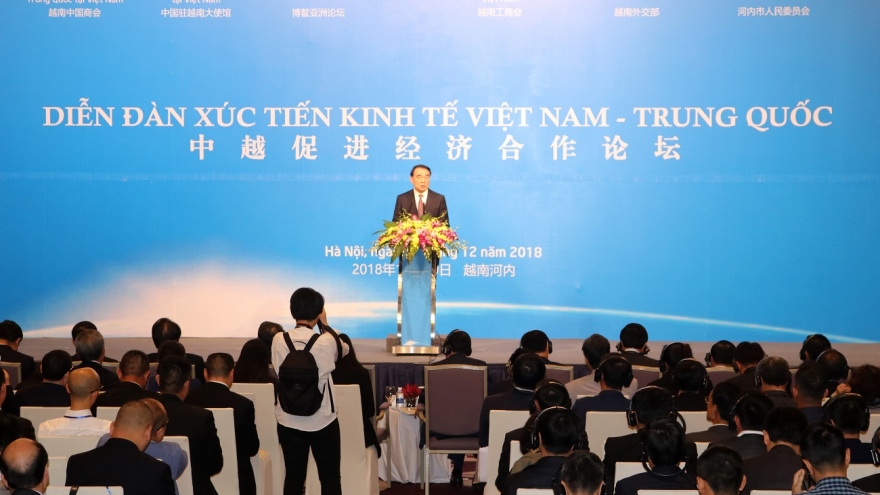Facilitating factors trigger new investment drive from China
VOV.VN - Vietnam’s improved business climate, along with a number of external factors, would enable the country to receive a boost in foreign direct investment coming from China.
 |
| China's JA Solar Holdings - invested plant in Quang Chau Industrial Park, Bac Giang province. Photo: Hong Quang. |
Tap into Vietnamese market
He revealed that it will begin the construction of a new cement production line in Lien Khe factory in the northern city of Haiphong in the near future.
The Chinese firm has been raising concerted efforts to pursue Vietnam’s policies of energy-saving and eco-friendly production and to crack the Vietnamese market with their cutting-edge technologies.
Such machinery can be used to utilize waste heat from a cement production to generate electricity and allow co-processing of waste materials in cement production, Xie noted.
C-Hope, along with nearly 200 others, were seeking further business opportunities at a recent Vietnam-China economic cooperation forum held in Hanoi.
Li Baodong, secretary-general of the Boao Forum for Asia (BFA), said Vietnam has persisted with its development model based on enhancing productivity, administrative reforms and creativeness. So far it has yielded encouraging results, especially an average GDP growth of over 6.8 percent in recent years.
Poised to become Asia's next economic tiger, Vietnam with political stability, upgraded infrastructure, and a positive business climate, has gained the trust of foreign businesses and investors, Li said.
China became the seventh largest foreign investor in Vietnam, with more than 2,000 Chinese-invested projects with a total worth of US$13 billion in registered capital by late November.
New FDI shift from China?
Vietnam witnessed a wave of investment from China after a crackdown was held on polluting factories in the neighbouring country, said Hoang Van Cuong, a member of the National Assembly Committee for Financial and Budgetary Affairs.
For instance, many coal-fired power plants in China were forced to shut down and the neighbouring country faciliates the operations of some large-scale factories causing little environmental impacts. As a result, several backward coal-fueled power plants in China were sent to Vietnam, Cuong further said.
He asserted that Vietnam is expected to welcome another shift of investment from China due to the ongoing trade dispute between the US and China and the impending the Comprehensive and Progressive Agreement for Trans-Pacific Partnership (CPTPP).
Many Vietnamese products shipped to the US fall in the same categories to those from China. The trade dispute, accompanied by fresh US tariffs on Chinese exports, would therefore enable businesses in Vietnam to penetrate deeper into the US market and replace Chinese exports.
Cuong assumed that producers with their goods subject to US tariffs would consider shifting their production to Vietnam, as investment in the country could help them avoid the US tariffs and protectionism.
The CPTPP would also help to increase investment from China since the trade pact provides investors and businesses with wider access to Vietnam’s trading partners. However, Chinese investors must own advanced technologies and must be able to create products that meet with the requirements of the demanding markets.
Vu Tien Loc, chairman of the Vietnam Chamber of Commerce and Industry (VCCI), said Vietnam could receive an increase in investment flow from China amid the fast-changing world economy.
After 30 years of attracting foreign direct investment (FDI), Vietnam inclines towards a new generation of FDI inflow that would yield higher economic efficiency along with state-of-the-art technologies that lower environmental impact.
Chinese investors are encouraged to make investments across many fields, especially high-tech engineering and agriculture, eco-friendly technology, and digital transformation, the VCCI chairman stressed.



